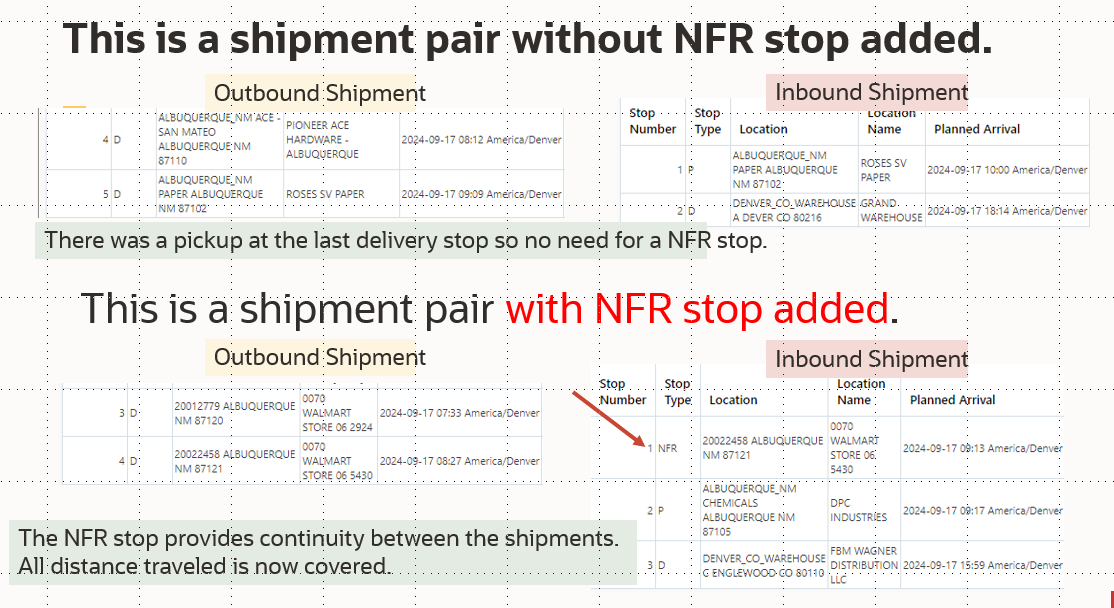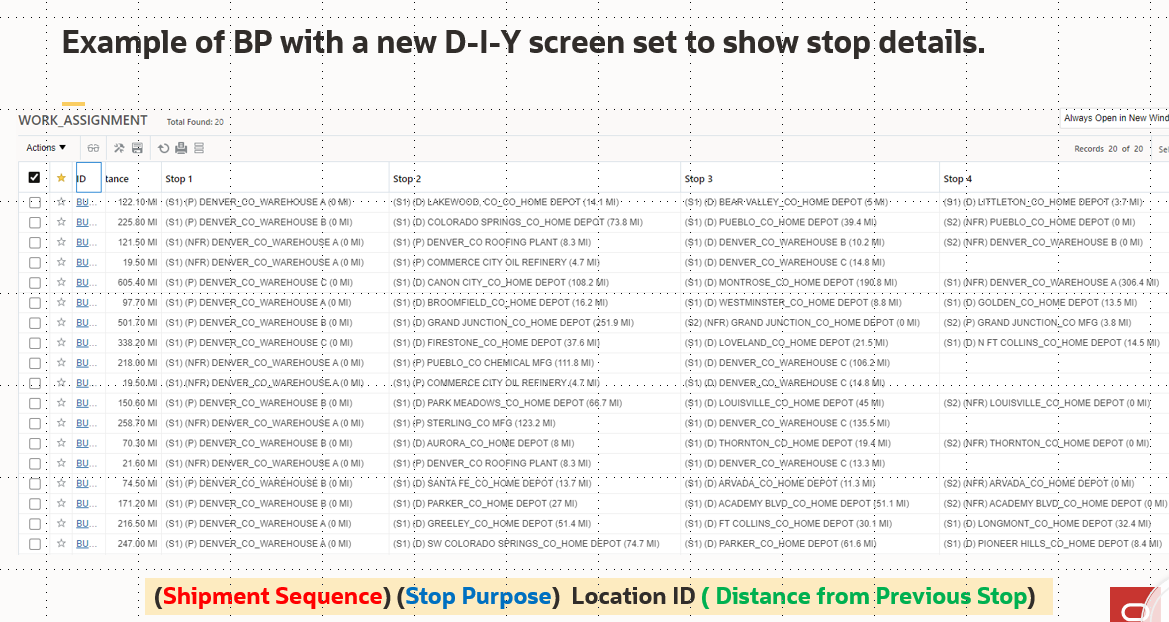Enhanced Evaluation of Cost/Time Gap (Non-Freight Related Stop) Between Shipments
In Work Assignment, the primary objective is to string together multiple shipments that would result in a day's work for a driver. The time considerations are configured and governed by the Resource Schedule Instance (RSI) and the Hours of Service (HOS). In the early version of WA, the gap between shipments was considered to be $1 per mile to provide continuity. In 24A, an enhancement was made to allow the client to change the value of that distance based charge. In 24B, the NFR stop was added to the downstream shipment to show the continuity and to build out the shipment cost and time to reflect the actual movement. In 24C, the logic was added to the optimization to cover the NFR related distance and cost. Even though that has now been handled, if there is a true gap between shipments the cost from 24A will be considered.

NFR Stop added to shipment.
The client is able to create a new screen set that uses shipment attributes to display the stops on the shipment. This allows the results screen to provide additional information.

Client configured screen set for more robust results.
These enhancements represent the realistic creation of the options to efficiently pair shipments together to provide beneficial Work Assignments. There are any number of scenarios that are impacted by this. There can be the case of multiple short haul shipments such as performed by an intermodal carrier. There can be the case for simple Outbound Pairing with a return Inbound shipment. In all cases, the inclusion of the NFR stop in the logic provides solution improvement.
Steps to Enable
A new Parameter, WA USE NFR STOPS BETWEEN SHIPMENTS is required to invoke the new logic. The parameter for WA BETWEEN SHIPMENT DISTANCE COST MULTIPLIER can also be invoked and will be used when there is a true gap between the shipments.
Tips And Considerations
The D-I-Y screen set uses Work Assignment attributes. An agent with SQL is required to populate the attributes. The SQL will be provided on request or the client can write their own. The D-I-Y screen is intended as a template so that the client can see the results of a large plan on one screen. .